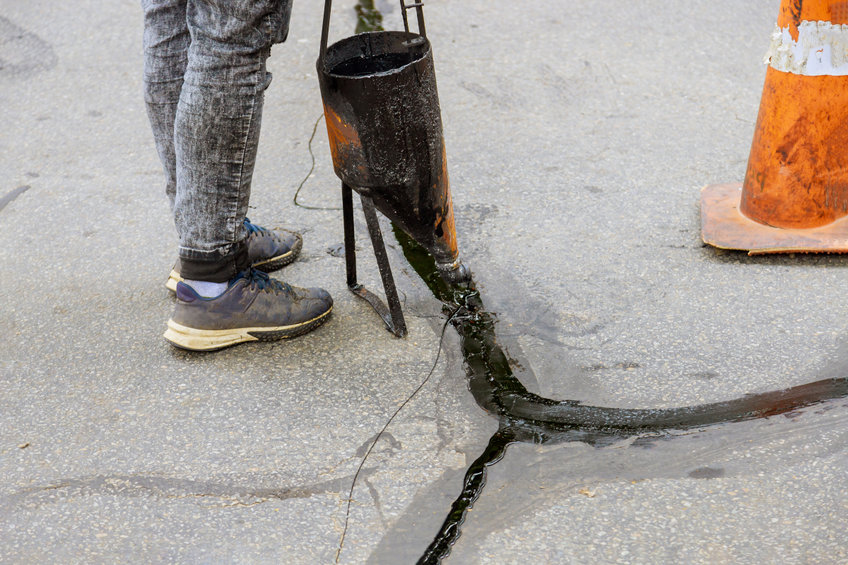
Seal coating and crack sealing are both methods applied to asphalt to prevent water from getting underneath the surface. After an asphalt pavement project is finished, the final step is to seal it. Sealing asphalt minimizes cracking, potholes, and water absorption. Keeping water at bay increases the durability of the pavement. If you’re wondering what the difference between seal coating and crack sealing is, read on:
Seal coating provides asphalt with a full layer of protection, preserving it from a variety of potentially harmful elements. It is a coal tar emulsion sealer which becomes a barrier between external influences and the asphalt pavement. With a layer of seal coat, your pavement will be able to resist UV radiation, water, gas, oil, and other chemicals that can damage the asphalt. To give your asphalt the best chance for a long life, cover the whole pavement in seal coating. A seal coat should be applied after new asphalt is laid and has fully cured (which generally takes about three to five months), and it should be reapplied again somewhere between three and seven years. Your reapplication timeframe varies depending on traffic patterns, typical weight contact, and weather exposures. Those who love a crisp, clean black pavement sometimes reseal every one to two years, but others looking to push the limits can go almost seven years. Not only is seal coating necessary for the longevity of your pavement, but it also transforms the pavement into a smooth and neat space. For parking lots, a flawless black top with bold painted striping is a refreshing welcome to customers and clients.
Crack seal is a spot treatment rather than a full layer. It consists of rubberized hot pour material that is heated in a hot pot and installed while it is boiling and supple. The rubberized material cools in about 15 minutes, creating a flexible barrier that will repel water. While seal coating is an overall cover on the pavement, crack sealing is more of a sturdy bandaid approach that is often performed yearly. It prevents water from getting into the base of the asphalt, which is where problems start. As water gets underneath the surface and goes through freeze-thaw cycles, it erodes the subsurface and creates more cracking and eventually potholes. Crack sealing is a cost-effective way to protect your asphalt.
If you need repairs on your asphalt pavement, you will want to apply crack seal first, then seal coat the entire pavement. It’s crucial that the crack sealant is completely dry before starting on the final seal coat. Make sure the pavement is cleaned off and doesn’t have dirt or debris over it. This will help make sure everything bonds strongly. Go Pave Utah has crack sealed and seal coated thousands of square feet of pavement across the state, and we know how to do the job right the first time. Asphalt can’t be rushed and should be handled expertly for the highest quality job that will last many, many years.